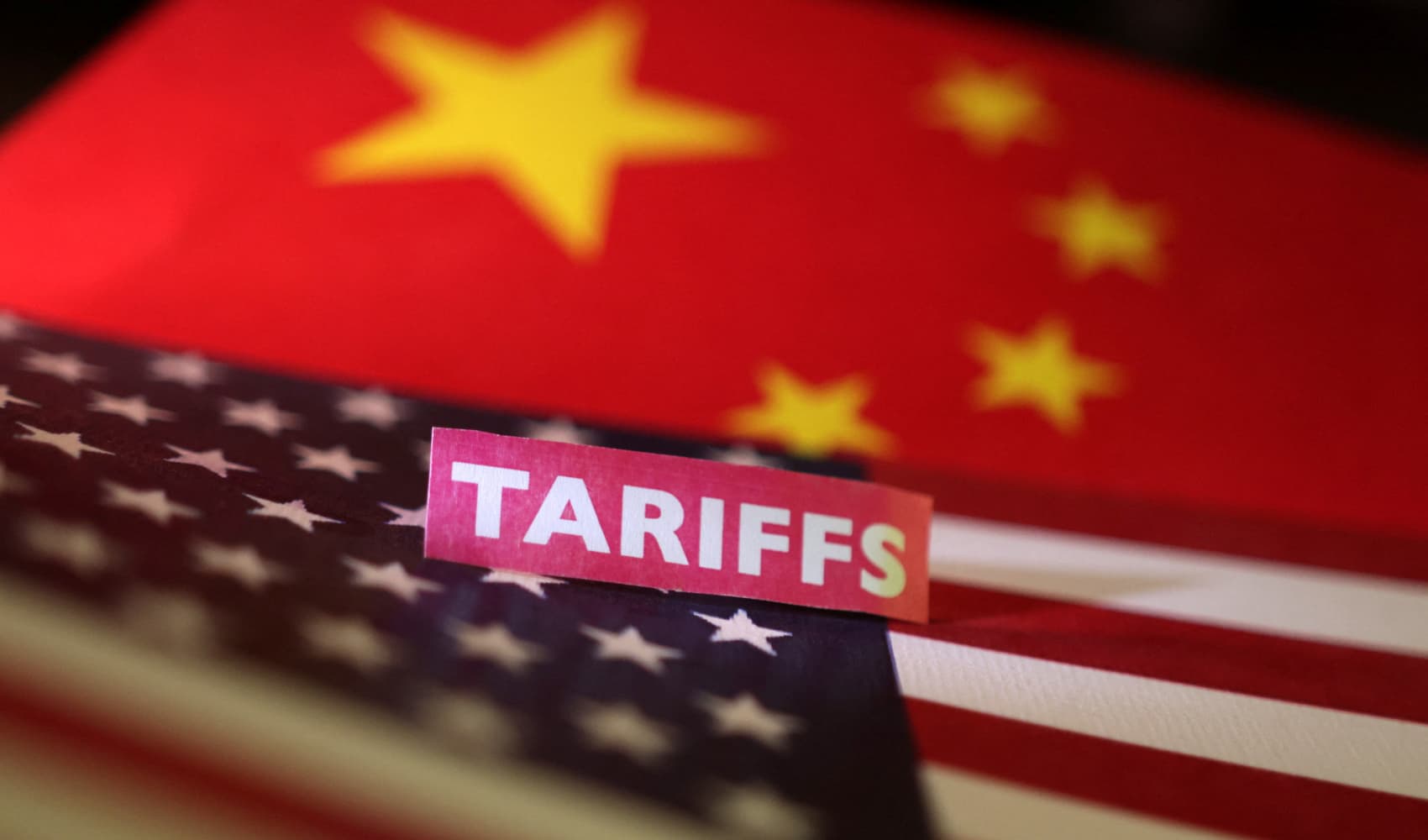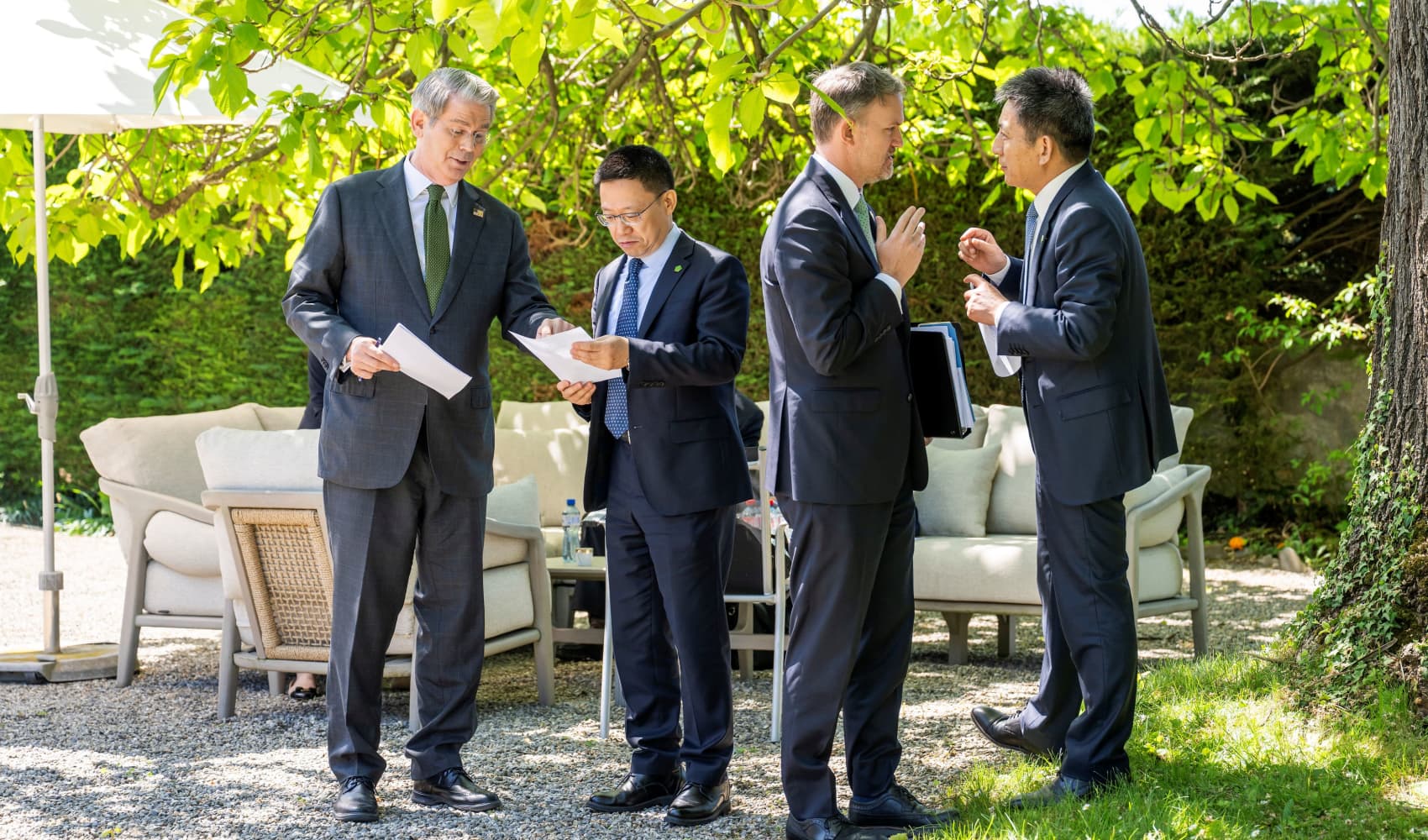China Mulls US Trade Talks: Will Tariffs Finally End?
China Mulls Trade Talks: Is a Truce with the U.S. on the Horizon?
Introduction: A Glimmer of Hope in the Trade War Clouds?
The global economy has been holding its breath, hasn't it? For years, the trade war between China and the United States has felt like a relentless storm cloud, casting a shadow of uncertainty over businesses and consumers alike. But now, a sliver of sunlight might be breaking through. China has announced that it's evaluating the possibility of initiating trade negotiations with the U.S. Could this be the beginning of the end, or just another false dawn?
U.S. Overtures: Reaching Out Across the Divide
According to China's commerce ministry, senior U.S. officials have been extending olive branches, reaching out "through relevant parties multiple times" in hopes of restarting tariff negotiations. It sounds like the U.S. is eager to get back to the table. But why now? What's changed?
Why Now? A Shift in Dynamics
Several factors could be at play. Perhaps the bite of tariffs is starting to sting both economies more acutely than anticipated. Or maybe there's a growing realization that a prolonged trade war benefits no one. Think of it like two boxers trading blows: eventually, both fighters get weary and start looking for a way to end the match.
The Tariff Tango: A History of Retaliation
To fully understand the significance of this potential development, let's rewind a bit. The trade war truly ignited when former U.S. President Donald Trump slapped hefty tariffs – up to 145% – on imported Chinese goods. China, understandably, retaliated with its own levies, adding taxes up to 125% on U.S. products. It became a tit-for-tat battle, escalating tensions and disrupting global supply chains.
The Impact of Tariffs: A Chain Reaction
Tariffs act like dams in a river of trade, restricting the flow of goods and increasing costs. These costs get passed on to consumers, leading to higher prices for everything from electronics to clothing. Businesses, meanwhile, face increased uncertainty and are forced to reconsider their investment strategies.
China's Evaluation: Weighing the Pros and Cons
China's announcement that it's "evaluating" U.S. overtures is carefully worded. It's not a commitment, but rather an indication that they're considering the possibility. This suggests that internal debates are likely taking place within the Chinese government about the potential benefits and risks of entering into negotiations.
What's at Stake for China?
For China, the stakes are high. On one hand, resolving the trade war could boost its economy, ease pressure on its export sector, and improve its international image. On the other hand, any agreement with the U.S. would likely require concessions, potentially impacting its domestic policies and economic strategies.
Potential Outcomes: What Could Trade Talks Look Like?
If trade negotiations do commence, what are some possible scenarios? A complete resolution of the trade war, with the removal of all tariffs, is perhaps the ideal outcome. However, a more likely scenario might involve a phased approach, with gradual reductions in tariffs and commitments from both sides to address specific trade imbalances.
The Role of Technology: A Key Battleground
Technology is likely to be a central theme in any trade negotiations. The U.S. has expressed concerns about China's technological advancements, particularly in areas such as artificial intelligence and 5G. Expect discussions on intellectual property protection, data security, and fair competition in the technology sector.
Global Implications: Beyond the U.S. and China
The trade war between the U.S. and China has had ripple effects around the world, impacting global trade flows, investment decisions, and economic growth forecasts. A resolution could provide a significant boost to the global economy, restoring confidence and fostering greater stability.
The Importance of Global Cooperation
Ultimately, addressing global trade imbalances and promoting sustainable economic growth requires international cooperation. The U.S. and China, as the world's two largest economies, have a responsibility to work together to create a more stable and equitable trading system.
Challenges Ahead: Hurdles to Overcome
Even if both sides agree to negotiate, significant challenges remain. Deep-seated disagreements over trade practices, intellectual property rights, and market access will need to be addressed. Moreover, political tensions and strategic rivalries could complicate the process.
Building Trust: A Foundation for Progress
Trust is essential for successful negotiations. Both sides will need to demonstrate a willingness to compromise and to engage in good-faith discussions. Transparency and clear communication will also be crucial for building confidence and avoiding misunderstandings.
The Bottom Line: Hope for a Trade Truce?
China's consideration of trade talks with the U.S. offers a glimmer of hope that the trade war might eventually be resolved. However, significant hurdles remain, and the path forward is likely to be long and complex. Only time will tell if this potential thaw in relations will lead to a lasting truce.
Looking Ahead: What to Watch For
Keep a close eye on official statements from both the U.S. and China. Any announcements regarding the scheduling of trade talks, the composition of negotiating teams, or the scope of discussions will provide valuable insights into the progress of negotiations.
Navigating Uncertainty: Preparing for All Outcomes
Businesses should prepare for a range of possible outcomes, from a complete resolution of the trade war to continued uncertainty. Diversifying supply chains, exploring new markets, and developing flexible strategies will be crucial for navigating the evolving global trade landscape.
Conclusion: A Cautiously Optimistic Outlook
The news that China is considering trade talks with the U.S. is a positive development, offering a potential pathway toward resolving a trade war that has weighed heavily on the global economy. While challenges remain, the possibility of negotiations provides a reason for cautious optimism. The world will be watching closely to see if these overtures lead to meaningful progress and a more stable and predictable trading environment.
Frequently Asked Questions
- What are the main issues in the US-China trade war?
The core issues revolve around trade imbalances, tariffs, intellectual property theft, market access, and technology transfer. The U.S. has accused China of unfair trade practices, while China has criticized the U.S. for protectionism.
- What impact has the trade war had on the global economy?
The trade war has disrupted global supply chains, increased costs for businesses and consumers, and contributed to uncertainty in financial markets. It has also dampened global economic growth forecasts.
- What are the potential benefits of a trade deal between the US and China?
A trade deal could boost economic growth, reduce uncertainty, lower costs for businesses and consumers, and improve international relations. It could also lead to greater cooperation on other global issues.
- What are the key challenges to reaching a trade agreement?
Key challenges include deep-seated disagreements over trade practices, political tensions, and the need for both sides to make concessions that may be unpopular domestically.
- How can businesses prepare for the potential outcomes of trade negotiations?
Businesses can diversify their supply chains, explore new markets, develop flexible strategies, and closely monitor developments in trade policy. They should also engage with industry associations and government agencies to stay informed and advocate for their interests.

